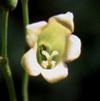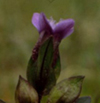SEARCH the
Gentian Research Network
and Rutgers University:
GENTIANS
Classification (newest)
List of genera
List by tribe
Gentian characteristics
Gentianales
RESEARCH
Research projects
People, addresses
Literature, publications
Links
Add info to
this site
TOPICS
Anatomy
Common names
Ecology - Natural history
GEOGRAPHY
Floras
Latin America
North America
TRIBES
Saccifolieae
_____________________
Information in other languages:
_____________________
This page
is maintained
by Dr.
Lena
Struwe
(e-mail),
and hosted by
Rutgers University, USA
updated: 01/19/11
| Ethnobotany
of gentians: species with medicinal properties Back to
ethnobotany overview |
||||||||||||||||||||||||||||||||||||||||||||||||||||||||||||||||||||||||||||||||||||||
|
There are many health-related products that contain gentian extracts. Gentian extracts from many species have been shown to be anti-inflammatory, anti-fungal, anti-hepatic (against diabetes), lower fevers (febrifuges), and are used for a wide variety of purposes. They are also added to diet pills, hair-loss products, homeopathic medicines, body cleansing products, and many others.
Jensen, S. R. & J. Shripsema. 2002. Chemotaxonomy and pharmacology of Gentianaceae. Pp. 573- 632. In: L. Struwe & V. A. Albert, editors. Gentianaceae – systematics and natural history. Cambridge University Press, Cambridge.
Links: Botanical.com [old herbal information] Gentians - bitter pill to swallow [medicinal history of gentians on HealthWorld Online]
© Lena Struwe, 2002-2011 |
||||||||||||||||||||||||||||||||||||||||||||||||||||||||||||||||||||||||||||||||||||||
| Note: The GENTIAN RESEARCH NETWORK do not endorse or encourage the use of gentians or gentian-derived products for any medicinal purposes or as a cure for specific diseases and ailments. The information is listed here for educational purposes only. The health value and safety of any of these plants and products has not been evaluated by us and we do not recommend any of them for medicinal use. | ||||||||||||||||||||||||||||||||||||||||||||||||||||||||||||||||||||||||||||||||||||||






